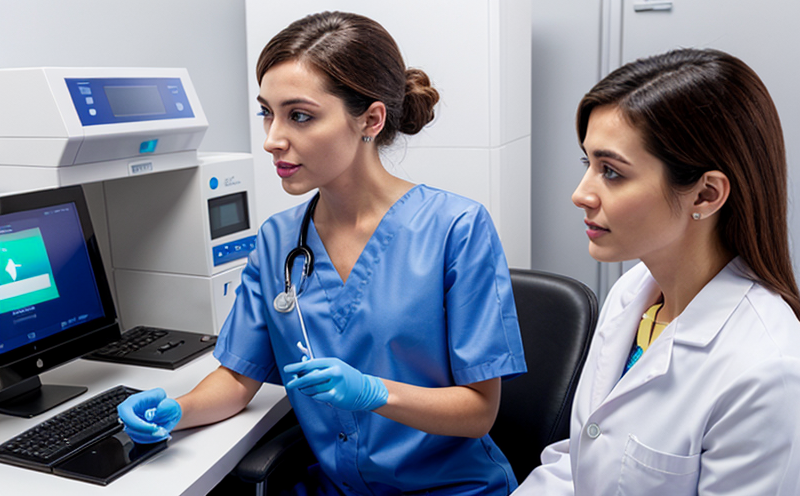Real-Time PCR Detection of Listeria monocytogenes in Dairy
In the realm of clinical and healthcare testing, ensuring the safety and quality of dairy products is paramount. One critical aspect of this endeavor is the detection of harmful pathogens such as Listeria monocytogenes. This bacterium can cause severe infections, particularly in vulnerable populations like pregnant women, newborns, elderly individuals, and those with compromised immune systems. The real-time PCR method offers a highly sensitive, specific, and rapid approach to detect this pathogen in dairy products, ensuring consumer safety and compliance with international standards.
The process begins with the collection of samples from various stages of the dairy production cycle—raw milk, pasteurized milk, cheese, yogurt, and others. These samples are then prepared through a series of steps that include homogenization, filtration, and nucleic acid extraction to ensure purity and consistency in the testing process. The extracted DNA or RNA is subjected to real-time PCR, where specific primers and probes targeting the L. monocytogenes genome are used.
The real-time PCR machine uses fluorescence-based detection of target sequences as they amplify during the reaction. This allows for quantitative measurement of the pathogen's presence in a sample, providing a clear picture of its concentration and allowing for early intervention if necessary. The entire process is conducted under strict laboratory conditions to ensure accuracy and reliability.
Quality assurance plays a crucial role in this testing method. Laboratories adhering to ISO 17025 or EN ISO/IEC 17025 standards must maintain rigorous protocols and calibration of equipment, including the real-time PCR machines used for these tests. Regular validation and proficiency testing are essential to ensure that results meet international acceptance criteria.
International standards such as ASTM E2849-13 provide guidelines on the use of real-time PCR in microbiological testing, emphasizing the importance of standardized procedures and reagents. Compliance with these standards ensures consistency across different laboratories worldwide.
Quality and Reliability Assurance
The quality and reliability of real-time PCR detection are paramount in ensuring accurate results that can be trusted by regulatory bodies and the public. Laboratories performing this test must adhere to stringent protocols, including the use of certified reagents, calibration of equipment, and regular validation studies.
Calibration of real-time PCR machines involves comparing the machine's output with a known standard. This ensures consistent results across different runs and instruments. Regular proficiency testing is another critical aspect of quality assurance. Participating in external proficiency testing programs, such as those provided by AOAC International or the Codex Alimentarius Commission, helps ensure that laboratories meet international standards.
Validation studies are essential for establishing the reliability of a test method. These studies involve comparing the results obtained from real-time PCR with other established methods like culture-based techniques. The goal is to demonstrate that the real-time PCR method provides accurate and reproducible results, thus maintaining trust in the testing process.
International Acceptance and Recognition
- American Society for Testing and Materials (ASTM): ASTM E2849-13 provides guidelines on the use of real-time PCR in microbiological testing, emphasizing the importance of standardized procedures.
- International Organization for Standardization (ISO): ISO 17025 accreditation ensures that laboratories meet stringent quality management and technical requirements.
- Codex Alimentarius Commission: The Codex standards provide a framework for the safety and quality of food products, including dairy. Compliance with these standards is essential for international trade.
The real-time PCR method has gained widespread acceptance in various parts of the world due to its high sensitivity and specificity. Laboratories that adhere to international standards are recognized by regulatory bodies such as the Food and Drug Administration (FDA) in the United States, the European Medicines Agency (EMA), and similar organizations globally.
Use Cases and Application Examples
- Dairy Product Quality Control: Real-time PCR is used to ensure that dairy products meet safety standards, particularly in detecting Listeria monocytogenes.
- Food Safety Audits: Laboratories use real-time PCR as part of their internal and external audits to verify the absence or presence of pathogens.
- New Product Development: R&D teams utilize this method to test new formulations and processes for potential contamination risks.
A notable application example is in the dairy industry, where real-time PCR has been used to detect Listeria monocytogenes in raw milk samples. This not only ensures product safety but also helps in identifying potential sources of contamination at early stages of production.





